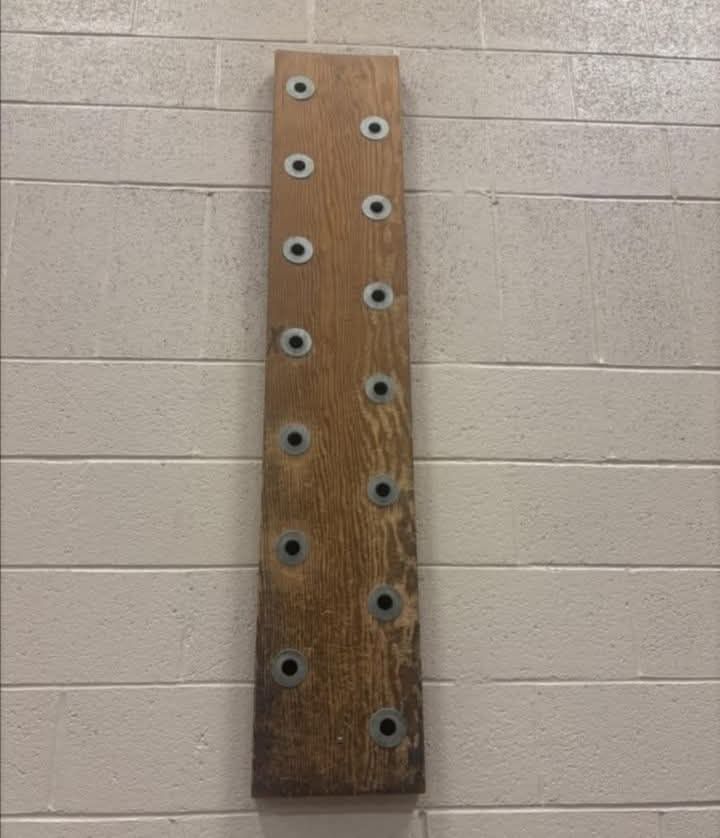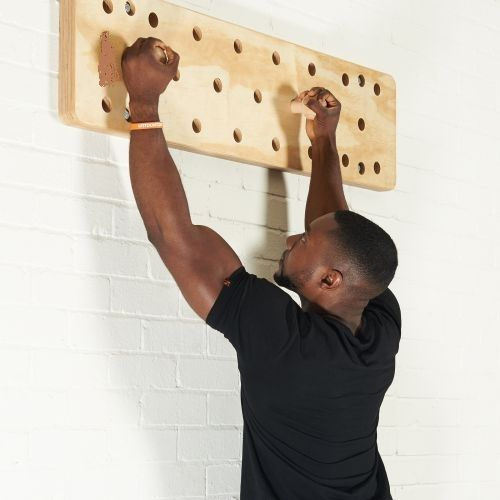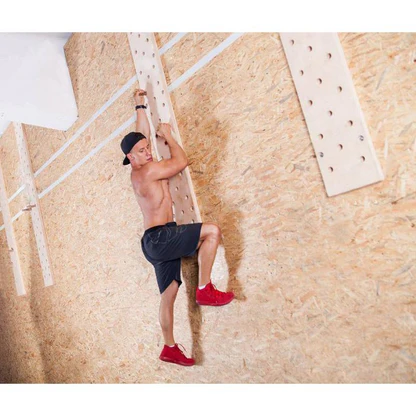The Mysterious Wall That Once Defined Toughness
Back in the day, if you saw one of these mounted on a gym wall, you knew someone was about to earn their stripes. It wasn’t flashy. No weights clanking. No digital screens or buttons to push. Just a flat wooden board full of holes — and two simple wooden pegs. To the untrained eye, it looked more like a carpentry project than fitness gear. But to a certain generation? This was the ultimate test of grit.
Today, most people walk right past it without a clue. But for those who remember, the pegboard wall was the real deal. It separated the weekend warriors from the serious athletes. Want to know what it’s all about? Let’s climb into it.

What Exactly Is a Pegboard Trainer?
At first glance, it’s simple — just a sturdy vertical board drilled with evenly spaced holes. The user grabs two pegs, inserts them into the holes, and climbs their way up (and sometimes back down), moving one peg at a time. Sounds easy, right? Yeah, until your arms feel like jelly after three holes.
The pegboard is a full-body workout disguised as a minimalist tool. While it mainly targets the upper body — especially the shoulders, arms, and back — it also forces you to engage your core and develop serious control. There’s no cheating. No shortcuts. Just raw strength and coordination.
The Golden Era: When Pegboards Ruled School Gyms
Ask anyone who went to school in the ’60s, ’70s, or ’80s, and they’ll probably say the same thing: that pegboard wall haunted the corner of the gym like a wooden monster. It was the unofficial rite of passage in many P.E. classes.
Video: Master the PEGBOARD CLIMB!!
Climbing a pegboard wasn’t just exercise — it was a challenge. And if you made it to the top? You earned bragging rights. Coaches loved it because it built serious functional strength. Students… well, they either loved it or dreaded it. But nobody forgot it.
Why It Faded Away — And Why It’s Making a Comeback
So, what happened? Why did these peg walls vanish from most gyms? The short answer: modern fitness trends shifted toward machines, convenience, and digital metrics. People wanted fast results, not slow climbs. And let’s be real — pegboards are tough. They require commitment, technique, and physical resilience. Not exactly everyone’s idea of fun.
But here’s the twist: in recent years, the pegboard has quietly staged a comeback. With the rise of CrossFit, calisthenics, obstacle races, and functional training, fitness enthusiasts are once again chasing raw strength. And guess what they’re turning to? The good old pegboard.

How Pegboards Build Strength Differently
What makes the pegboard special isn’t just the challenge — it’s the way it builds your body. You can bench press all day, but the pegboard demands real-world coordination. It’s about grip strength, shoulder stability, and core engagement — all at once.
Think of it like climbing a vertical chess board. Every move requires strategy. If you rush, you’ll gas out. If you hesitate, you’ll lose momentum. It teaches rhythm, patience, and muscle control. That’s why elite athletes, gymnasts, and military trainees use it. It doesn’t just build muscle — it builds mastery.
Video: Morley Athletic Climbing Peg Boards
Modern Pegboards: Old School Feel, New School Style
Today’s pegboards come in sleeker designs. You’ll find them in boutique fitness studios, CrossFit boxes, and high-end home gyms. Some are made of composite materials, others stick with traditional wood for that authentic feel. A few even mount horizontally for more dynamic movements and obstacle courses.
And while the concept hasn’t changed, the workouts have evolved. Trainers now use pegboards in circuits, combining them with bodyweight moves like push-ups, pull-ups, and L-sits. It’s not just about climbing anymore — it’s about unlocking full-body potential.

The Mental Game: Confidence Through Challenge
Let’s not overlook what the pegboard does to your mindset. It’s not just physical. Climbing it demands focus. You have to push through the burn, trust your strength, and keep moving even when your body screams “no.”
That kind of mental training sticks with you. It builds confidence. When you conquer the pegboard, you walk away with more than muscle. You walk away with proof that you can push past limits — one hole at a time.
Conclusion: Rediscovering the Wall That Built Warriors
The pegboard wall may have faded from the spotlight, but it never lost its edge. It’s a raw, honest, no-excuses kind of fitness — the kind that doesn’t care about trends, gear, or gym selfies.
Whether you’re an old-school athlete reminiscing about gym class victories, or a new-generation fitness junkie chasing that primal burn, the pegboard is calling. It’s simple. It’s brutal. And it’s back.
So, next time you see one of those mysterious walls with holes and wonder what it’s for — now you know. It’s not just a tool. It’s a test. A quiet one. But trust me — it speaks loud and clear once you grab those pegs.